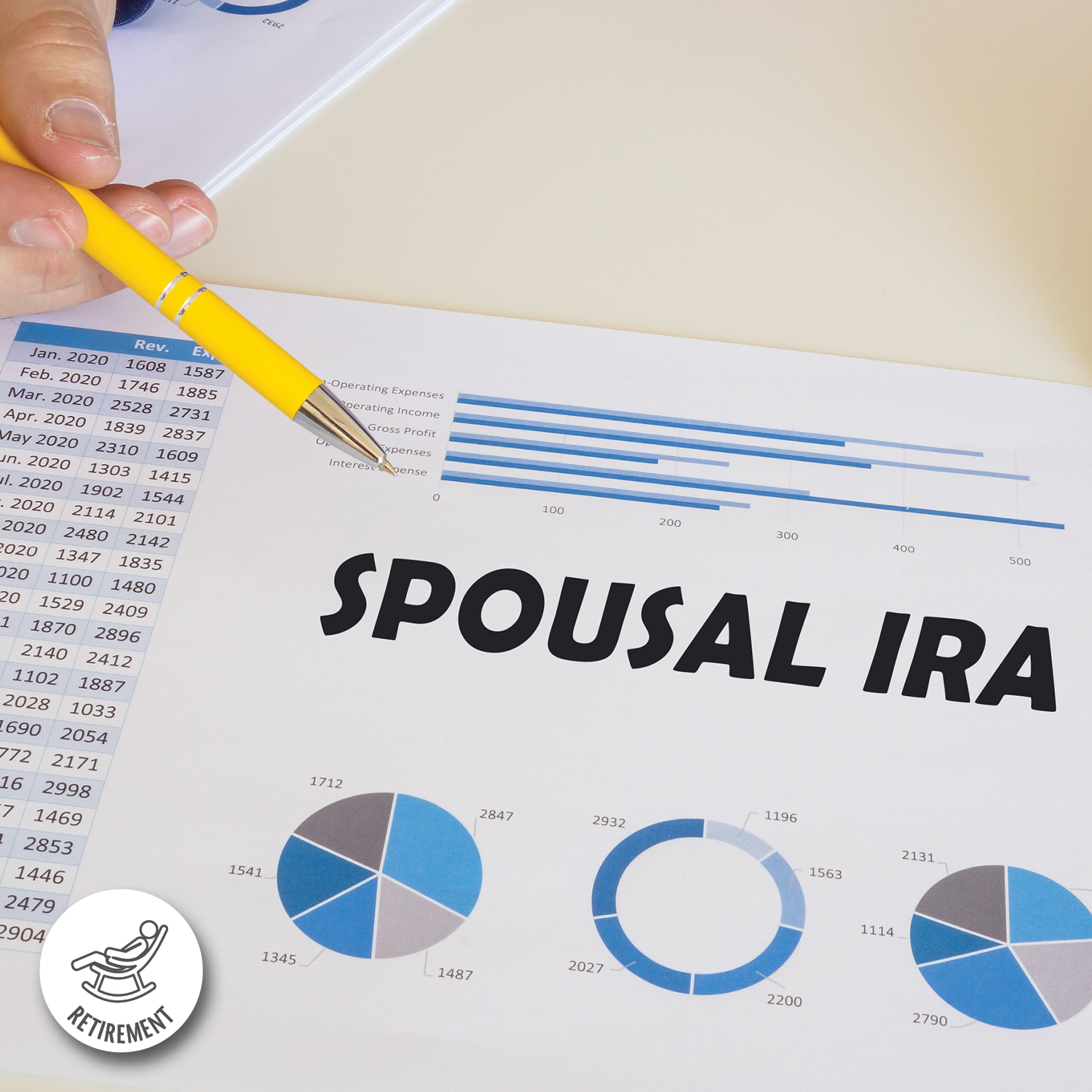Retirement Primer: All You Need to Know About Spousal IRAs

IRA (Individual Retirement Account) works differently. In this unique retirement account, an unemployed individual, who has a wage-earning partner, is able to contribute to their retirement savings.
Here’s what you need to know about spousal IRAs, how they work and how to manage one effectively.
What is a spousal IRA?
A spousal IRA is designed for unemployed or underemployed partners of working individuals. These retirement accounts allow the non-working or low-working spouse to contribute to an IRA based on the income of their working, or wage-earning, partner. The maximum contribution limit for a spousal IRA will be the same as for a regular IRA, subject to annual IRS guidelines.
A couple that is eligible for a spousal IRA can open a traditional spousal IRA or a Roth spousal IRA.
Is every couple eligible for a spousal IRA?
To qualify for a spousal IRA, couples must file joint tax returns. Additionally, the working spouse must have enough earned income to cover both their IRA contributions and those of their non-working spouse. The non-working spouse must also meet the same eligibility requirements as any other IRA contributor.
What are the contribution limits for spousal IRAs?
As of 2024, the contribution limit for traditional and Roth IRAs is $7,000 per year, with a catch-up contribution of $1,000 for a maximum of $8,000 for individuals aged 50 and older. This limit applies to both traditional and Roth IRAs. For spousal IRAs, the maximum contribution is determined by the earned income of the working spouse and is subject to the overall IRA contribution limit.
For married couples filing jointly, if the spouse making the IRA contribution is covered by a workplace retirement plan, the phase-out range for IRAs is $123,000 to $143,000 in 2024.
For an IRA contributor who is not covered by a workplace retirement plan and is married to someone who is covered, the phase-out range increases to $230,000 to $240,000 in 2024.
What are the advantages of a spousal IRA?
A spousal IRA provides a way for an unemployed or underemployed individual to build their retirement savings. In addition, both spouses will have access to a wide variety of investment options, including mutual funds, exchange-traded funds (ETFs), individual stocks and bonds.
Are contributions to a spousal IRA tax-deductible?
Contributions to a traditional spousal IRA may be tax-deductible, depending on the couple’s income level and whether the working spouse is covered by a retirement plan at work.
When withdrawals are made from the spousal IRA during retirement, they will be taxed as ordinary income.
On the other hand, contributions to a Roth spousal IRA are made with after-tax dollars, which means they are not tax-deductible. However, qualified withdrawals from Roth IRAs, including contributions and earnings, are tax-free in retirement.
How to open a spousal IRA
Opening a spousal IRA is no different than opening a regular IRA. With the help of your chosen financial institution or wealth management provider, you’ll identify the best IRA type for your needs, and then open the account in your name. During this process, you’ll provide your personal information, including proof of income.
Once the account has been created, you can start making contributions. At this point, you’ll need to choose the investments you’d like to hold with the funds in the account. After you’ve done so, your account is good to go!
Managing a spousal IRA effectively
If you’ve decided that a spousal IRA may be a good idea for you or your partner, make sure you are managing the account effectively. Here’s how:
- Maximize contributions. Take full advantage of the contribution limits for both spouses. Aim to contribute the maximum amount allowed each year (which tends to change annually) to optimize your retirement savings potential.
- Diversify investments. Choose a diversified portfolio of investments based on your risk tolerance, time horizon and retirement goals. You may want to consult with a financial advisor to develop an investment strategy tailored to your needs.
- Regularly review and rebalance. Periodically review your spousal IRA portfolio to ensure it remains aligned with your long-term objectives. Rebalance your investments as needed to maintain your desired asset allocation.
- Consider a Roth conversion. Evaluate the benefits of converting traditional IRA assets to a Roth IRA. A Roth conversion may offer tax advantages, especially if you expect to be in a higher tax bracket upon retirement.
- Stay informed. Keep up with annual changes in tax laws and retirement guidelines that may impact your spousal IRA. You’ll also want to stay in the know about new investment opportunities and market trends to make informed decisions. Regular check-ins with your financial provider is a very wise use of your time, as it’s their job to keep up on the important aspects that might impact you.
- Plan for withdrawals. Develop a withdrawal strategy for your spousal IRA to minimize taxes and maximize income in retirement. Consider factors such as timing, tax implications and required minimum distributions (RMDs).
Spousal IRAs offer a valuable opportunity for couples to boost their retirement savings and secure their financial future. Use this guide for all you need to know about spousal IRAs.
